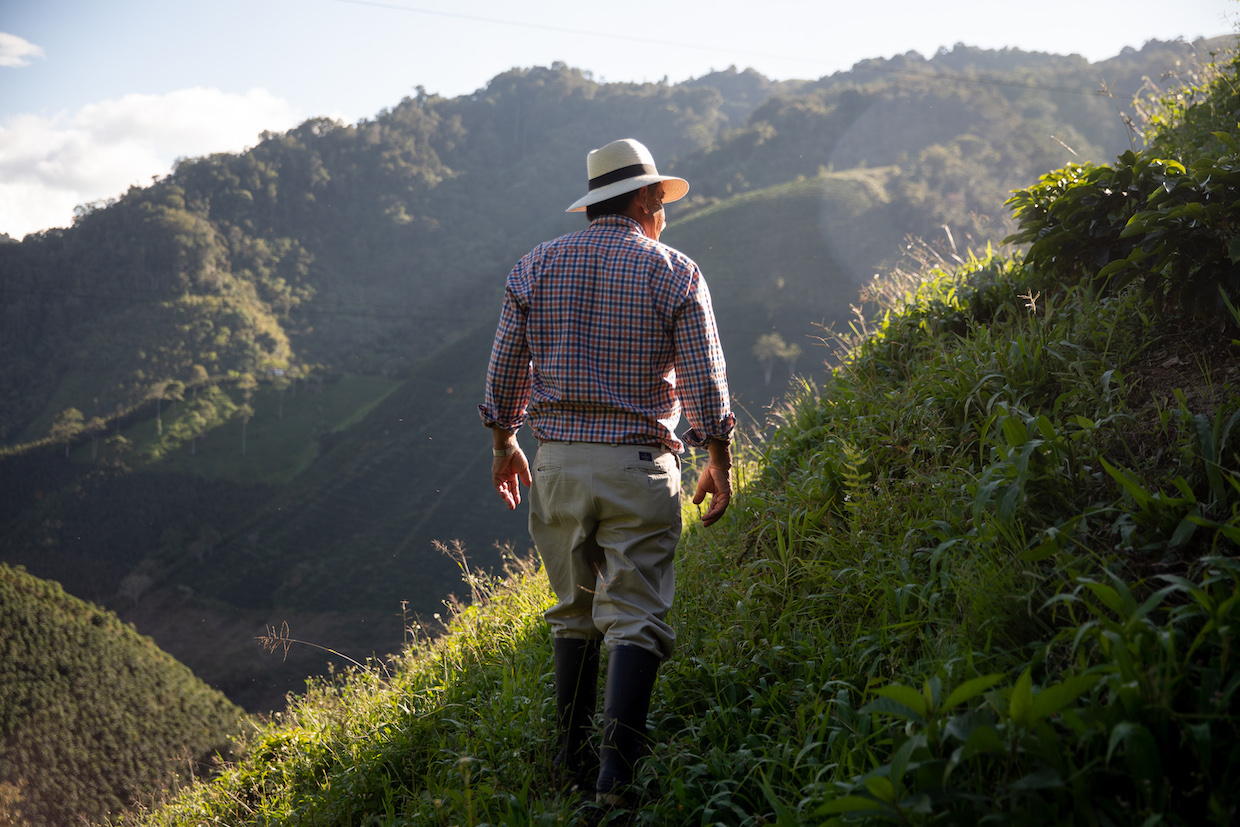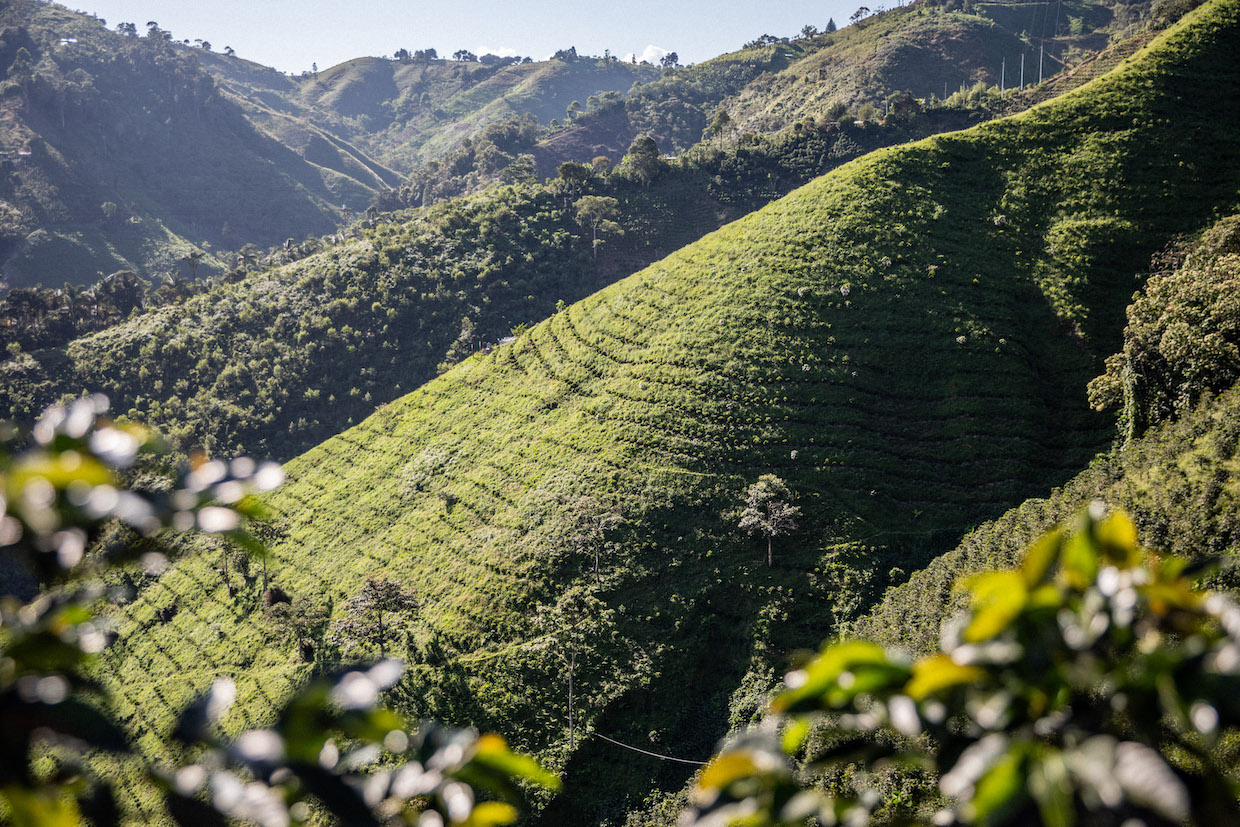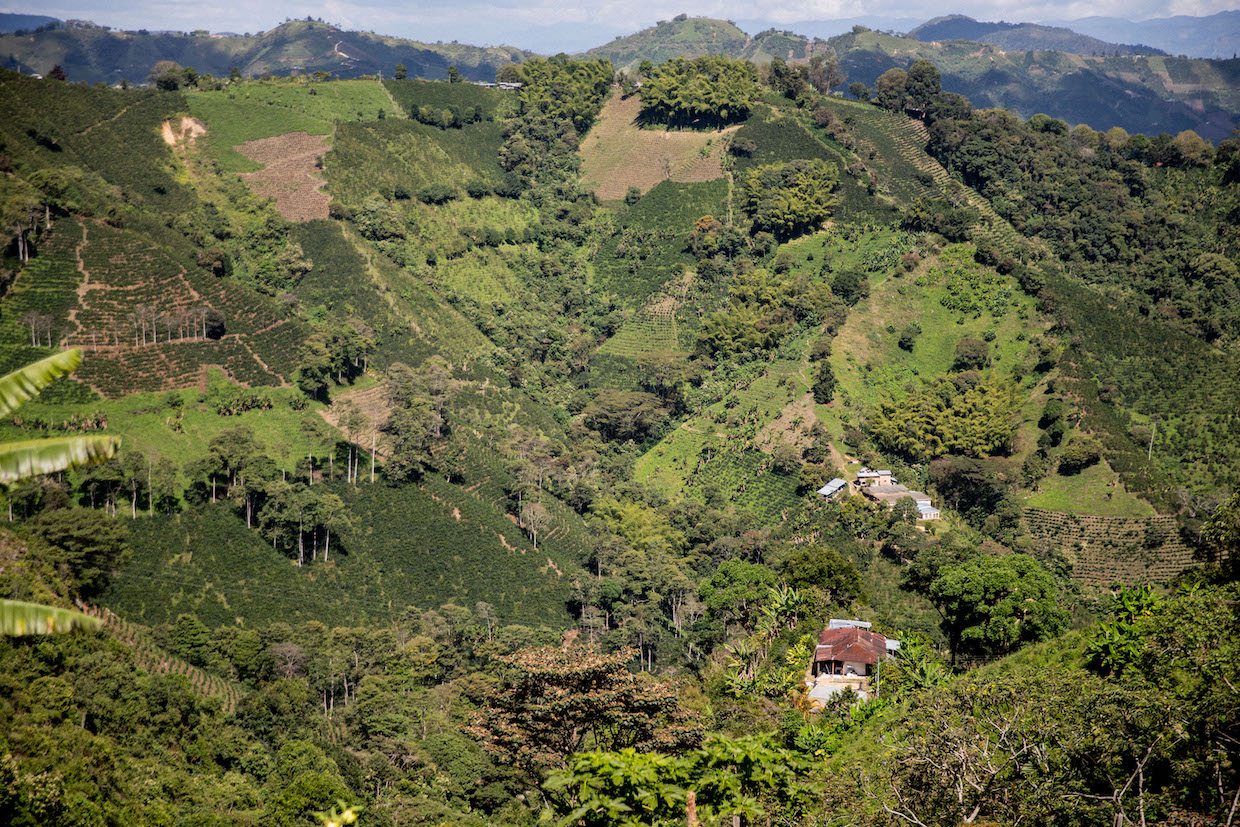A multi-stakeholder group is developing a new data-driven tool geared towards more equitable pricing in the green coffee trade called the Sustainable Coffee Buyers Guide (SCBG).
A pre-competitive tool led by Colombia-based Azahar Coffee Company and coffee roasting software provider Cropster, the Guide is attempting to lead socially conscious buyers to prices that result in prosperity among coffee farmers, as opposed to baseline incomes.

Edgar Heladio Ossa Castillo from San Isidro in Huila, Colombia, who participated in the development of the guide.
Fundamentally, the guide serves as an impact calculator that focuses on farmgate price, which might broadly be defined as the price that actually gets paid to farmers by local market actors, cooperatives or exporters.
The Guide itself offers two main functions. The first is a free online calculator through which users can input the farmgate price paid for coffees from a specific region. The Guide then shows what impact that price is likely to have on a local producer, such as “prosperous price,” “living price” or “poverty price.”
As Sustainable Coffee Buyers Guide Co-Creator Vera Espíndola Rafael told DCN, “We want to make people specifically conscious of what the farmer received for the coffee.”

Edilberto Vergara Tellez from Vereda San Isidro in Huila, Colombia, who participated in the development of the guide.
Slated to launch this November, the second main function will involve a paid subscription platform that will give roasters/buyers tools for customized budgeting based on the income needs and goals of producers.
The Guide currently applies to Colombia, although plans are in the works for additional countries and broad geographic regions of coffee origin.
Price Tiers
The SCBG offers four coffee price tiers related to the livelihood of producers: poverty price, legal price, living price, and prosperous price. Each of the price points is explained in more detail in the Guide, but here’s the short version:
- Poverty price: The price a farmer would need to earn for their family to meet the rural poverty line.
- Legal price: The price a farmer would need to earn to meet the national minimum wage for an independent contractor.
- Living price: The price for the farmer and hired farmworkers to earn a living income, not just a minimum wage, as determined by the Anker Research Institute.
- Prosperous price: The price a farmer and all employees would need to earn a living wage plus account for 20% for personal savings and farm investments.
The SCBG is curating and collecting data to help coffee buyers understand how the first three prices in this framework — which might be referred to as “price floors” — do not necessarily reflect sustainable purchasing strategies.
Working Towards the Prosperous Price
Rafael, member of the Specialty Coffee Association board of directors who also serves as director of strategic initiatives at Azahar, suggested that rather than promoting a price floor, the guide’s starting point is geared towards prosperity.
Said Rafael, “We wanted to propose something, work with it, and hope that it will start to be used.”
The prosperous price is set by using a 50/30/20 rule: 50% is to cover cost of production; 30% is to cover cost of living; and 20% is for additional savings. This price is designed to apply to the business and all of its employees and workers.
In the case of the SCBG, the local costs of production were derived through a pilot project that began in early 2019 and has since involved more than 120 individual producers and cooperatives.
SCBG representatives conducted workshops with producers to expose the true costs of production, highlighting the hidden costs of their businesses. Examples of hidden costs are equipment used for harvesting that might otherwise be confused with family-owned items, such as machetes, ropes, or ladders.
The data was then released to both the participating farmers and the industry in 2020. Earlier this year, the first edition of the Guide was released at the Specialty Coffee Expo in Boston, featuring data specific to Colombia.
Industry Collaboration Required
Rafael said the Guide hopes to build off the increased spirit of collaboration and transparency in the coffee industry.
One of the first supporters of the Sustainable Coffee Buyers Guide has been the Specialty Coffee Transaction Guide (SCTG), an initiative through which scores of green coffee buyers have supplied purchasing data that is then anonymized.
Like the SCBG, the Specialty Coffee Transaction Guide serves as a price reference tool designed to pull away from pricing determined by the commodities market, or “C market” price.
“In the world of data collection, there is sufficient space for more collaboration and data sharing,” Rafael told DCN. “It’s great to hear that there are similar mindsets out there collecting data in effort to improve the lives of farmers.”
The Pro Version
Alongside the free calculator, the Guide has a “Pro” subscription option that is currently available for an annual fee and involves a printed resource.
According to Rafael, revenue from subscriptions will ensure that the data collection does not negatively impact farmers. Along those lines, information within the guide will be provided to producers as a free resource, including detailed analyses of costs of production.
“They are the data owners,” said Rafael, “so they deserve this information back.”
By the end of this year, the Guide hopes to expand beyond Colombia with versions covering Mexico and Central America, with parts of Africa to follow. Rafael said the Guide will be further presented at next month’s Green Coffee Summit, led by the Specialty Coffee Association.
Does your coffee business have news to share? Let DCN’s editors know here.
Lindsey Mesta
Lindsey Mesta is a specialty coffee professional who has over a decade of experience at origin and is motivated by efforts to improve equity across the supply chain.
Comment
1 Comment
Comments are closed.









Comment http://www.google.com